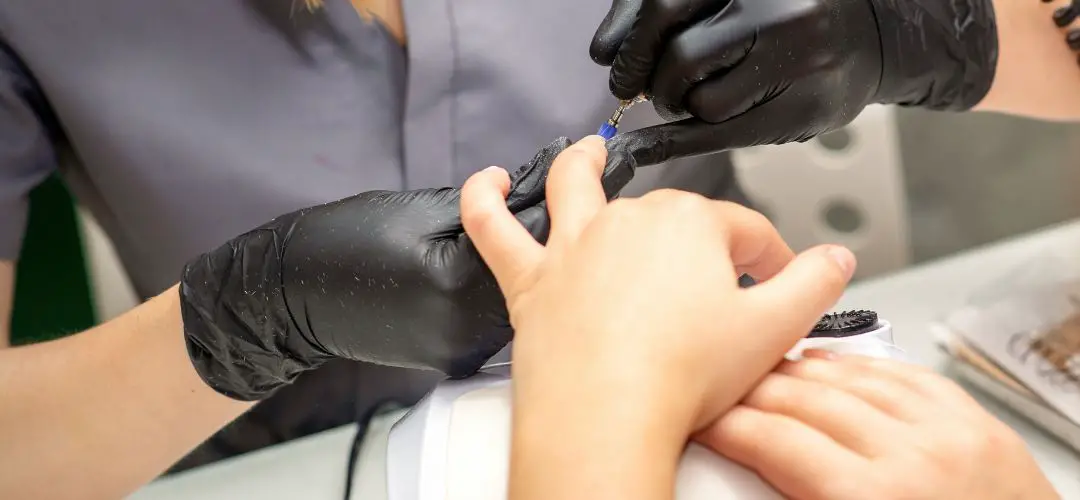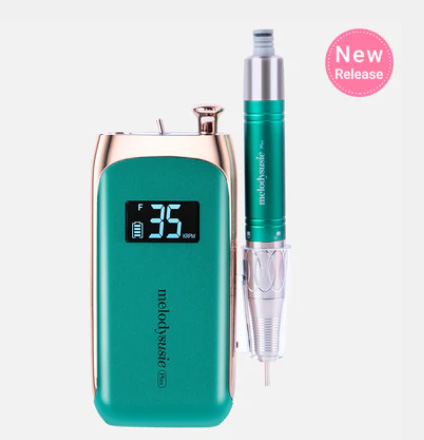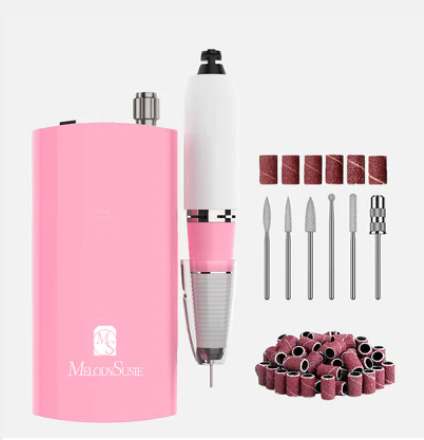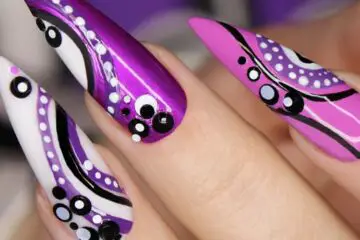On the surface, it might seem like a simple question to answer with an obvious “No”. But if you take a closer look at this age-old debate between professional manicurists and DIYers, there are actually some compelling arguments for using a drill on your nails. Here’s what you should know before trying this technique.
The biggest advantage of using a drill is that it can drastically speed up the process of filing your nails. It’s especially helpful if you have a lot of nails to do at once. The downside, however, is that it requires some expertise to avoid damaging your nails and cuticles.
While drills are typically used for more intricate designs and hard-to-reach areas, they’re also useful for removing a lot of material quickly. If you’re pressed for time, or just want to save yourself some effort in filing your nails, then using a drill is definitely an option. However, when it comes to drills, it’s important to be extra careful and only use them on healthy nails that are free from any breakage or damage.
Overall, using a drill on your nails is not necessarily a bad thing – as long as you do it safely and follow the instructions of any nail grinding device you’re using. It may seem intimidating at first, but with the right tools and some practice, you’ll be able to get the hang of it in no time! Just remember to take your time and keep safety in mind when attempting this technique. With a little bit of patience and some helpful tips, you’ll be able to master the art of nail grinding in no time!
So if you’re looking for a way to save yourself some time and hassle when filing your nails, then using a drill might be worth considering. Just make sure that you follow the steps mentioned above and practice caution when using the tool. Good luck!

Does a nail drill damage nails?
As with any type of nail tool, whether it’s a file or a drill, the level of damage to your nails depends on how you use them. Used properly, a nail drill can be an effective way to shape and style your nails without causing too much damage.
Using a nail drill can be intimidating at first, but with the right tools and practice it shouldn’t take long to master. The key is to start slow and keep safety in mind when using the device. It’s also important to ensure that your nails are healthy before attempting this technique.
When using a nail drill, it’s important to keep the bit from overheating and use a lower speed setting when working with softer nails. You should also make sure that you’re filing in one direction only, as going back and forth can cause your nails to break or chip away easily.
Another important factor to consider is the type of bit you’re using. There are a variety of bits available, from diamond-coated bits for filing hard acrylics to ceramic-coated ones for shaping gel and natural nails. It’s best to consult with a professional before investing in a nail drill bit, as they can help you choose the right one for your needs.
Overall, using a nail drill can be an effective way to shape and style nails. However, it’s important to remember that this tool should always be used with caution. Taking the time to practice proper techniques and understanding how each bit works will help ensure that your nails are looking their best while keeping them healthy and strong.
Can you ask nail tech to not use drill?
When it comes to getting a manicure or pedicure, many people assume that the nail technician will be using a drill for shaping and styling their nails. But is this really necessary?
Asking your nail technician not to use a drill can be beneficial in some cases, but it’s important to consider the pros and cons of this decision. On one hand, not using a drill can be beneficial for those with sensitive nails or skin around the nail bed. It also allows for more control over shaping and styling since the technician won’t be relying solely on the power of the tool.
On the other hand, there are some downsides to skipping out on a drill. The most obvious is that the process will take longer since the technician will need to use manual filing and buffing. This can also lead to uneven nails, as it’s harder to achieve precise shapes without the help of the drill.
Ultimately, it’s up to you whether or not you want your nail technician to use a drill. It’s best to discuss all of your options with the technician beforehand, so they can tailor their services to meet your needs. If you decide not to use a drill, be sure to tell them ahead of time so they can bring the proper tools and materials.
No matter what you decide, it’s important to remember that everyone’s nails are different and require different levels of care.
Is it possible to use a nail drill on artificial nails?
When it comes to artificial nails, many people assume that the nail technician will be using a drill for shaping and styling. But is this really necessary?
The answer is yes—in some cases, you can use a drill on artificial nails. This can be beneficial if you’re looking for precise shapes or designs, as the power of the tool can help achieve the desired look more quickly.
However, it’s important to note that using a drill on artificial nails is not always necessary or even recommended. Artificial nails are much harder and thicker than natural nails, so they can withstand manual filing and buffing. This means that you won’t necessarily need to use a drill in order to achieve a certain style.
When it comes to artificial nails, it’s best to discuss all of your options with your technician beforehand. They will be able to determine what method is most suitable for your particular type of nails and help you decide if you should go with a drill or not.
It’s also important to keep in mind that using a drill on artificial nails can be damaging if not done correctly. It’s important to make sure that the technician is experienced and knowledgeable, as they need to use the tool with caution in order to avoid any unnecessary damage or injury.
Should you file your nail bed?
The nail bed is the part of your nails that you can actually see; it’s the white, crescent-shaped part at the bottom. It’s important to properly care for your nail bed in order to keep your nails healthy and strong.
One way of caring for your nail beds is filing them. Filing helps to remove ridges and smooth out the surface of your nail bed. It also helps you to shape and even out your nails, so that they look neat and professional.
When filing your nail bed, it’s important to use the right tools. A buffing block or a manicure file are best for this purpose; avoid using metal files which can potentially damage your nails. It’s also best to use a gentle, back-and-forth motion rather than sawing or filing in circles.
Filing your nail bed is not necessarily required every time you get a manicure, though it may be necessary if you have ridges in your nails that need to be smoothed out. Talk to your technician to determine if filing your nail bed is the right option for you.
Another important factor is how often you should file your nails. You don’t want to over-file them; doing so can cause them to thin and weaken, which can lead to splitting or breaking. Generally speaking, it’s best to file your nails every 4-6 weeks, or whenever you notice any ridges or unevenness in your nail bed.
Filing your nail bed is an important part of maintaining healthy nails. When done correctly, it can help to keep your nails looking neat and attractive. Be sure to use the right tools and go slow when filing so that you don’t damage your nails.
Conclusion | Should you use a drill on your nails?
Filing your nail bed is an important part of proper nail care and can help keep nails looking neat and attractive. The best tools to use for filing are buffing blocks or manicure files. It’s generally advised to file every 4-6 weeks or as needed when ridges become noticeable, but it’s important not to over-file which can weaken the nails. With careful filing, you can maintain healthy and attractive nails.





